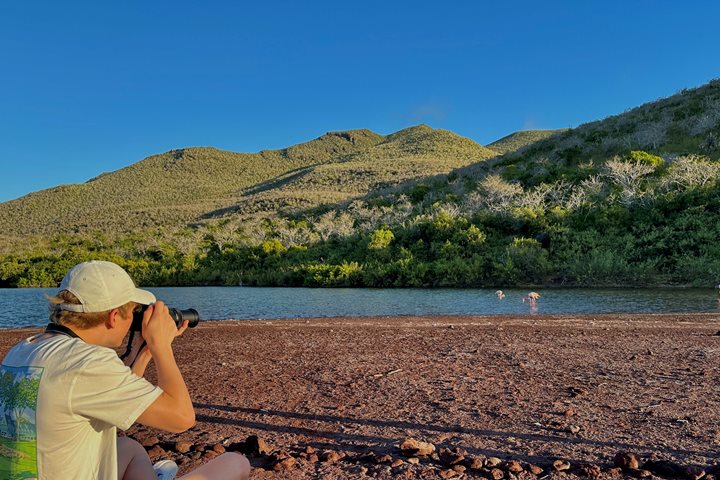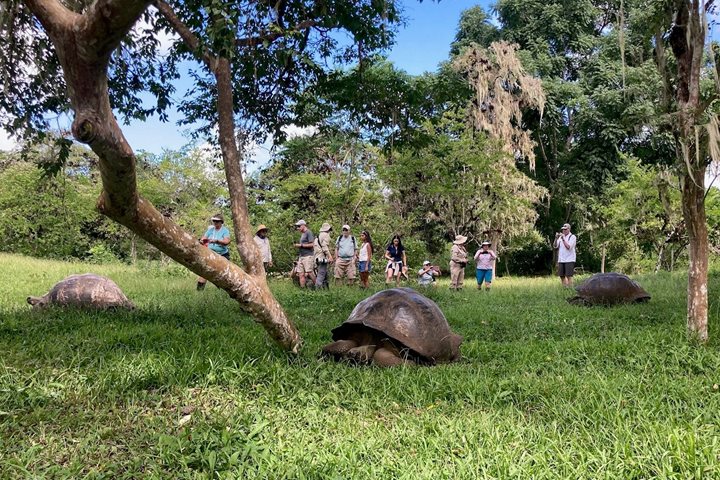After visiting the central islands of the archipelago, National Geographic Islander sailed north to visit two of the most spectacular sites in the Galapagos: Chinese Hat Island and Sullivan Bay (Santiago Island). The first is incredible due to the underwater world that surrounds the island, while the second site has spectacular geology, the result of recent eruptions.
After breakfast, we boarded Zodiacs and kayaks to explore the surroundings of Chinese Hat. The wind was blowing strongly, and the ocean looked completely turquoise and transparent, making it possible to observe the ocean floor and even some sharks and sea turtles swimming near the coast. We passed close to the coral beach, where American oystercatchers and whimbrels strolled indifferently near sea lions. Observing Santiago Island from across the channel, its landscape changed drastically. We observed immense fields of completely black lava that looked sterile without vegetation. These fields contrasted with the green vegetation of the island’s highlands. It was here that we spotted some Galapagos penguins leaving their nests, getting ready to start their daily routine of foraging. Their white plumage makes them easily identifiable from a distance. Due to their meekness, we were able to get close enough for guests to photograph them.
At 10:00 a.m., we prepared to discover the incredible underwater world along the channel that separates Chinese Hat and Santiago. Visibility was excellent, and it was possible to identify a wide variety of tropical fish, such as parrotfish, salemas, and king angelfish. Of course, we also observed whitetip reef sharks and stingrays. However, what probably caught the attention of our guests the most was observing Galapagos penguins swimming at full speed right in front of us. They shot past like small torpedoes in direct pursuit of small fish like salemas and mullets.
In the afternoon, National Geographic Islander sailed towards Sullivan Bay on Santiago Island. At 3:30 p.m., we boarded Zodiacs to visit the immense lava fields. These fields are the result of a gigantic eruption that occurred in 1897, forever changing the habitat and topography of that part of the island. Many of the solidified lava flows had the appearance of “intestines,” others looked completely homogeneous, but the common denominator for all was that the lava looked completely black. Just behind, the lava was luscious, a brown and reddish color with trees and cacti everywhere, clear evidence that this lava was older and remained untouched during the explosive eruption of 1897. Some bushes and cacti began to populate these barren lava fields, and we were pleasantly surprised to see some lava lizards walking along this completely desolate landscape, trying to catch some flying insects.
Just before sunset, we returned to National Geographic Islander. The last rays of the sun illuminated the mountains of Santiago with a reddish hue. In the sky above, flocks of seabirds returned to their nests, reminding us how wonderful this day was, in this magical place called Galapagos.







